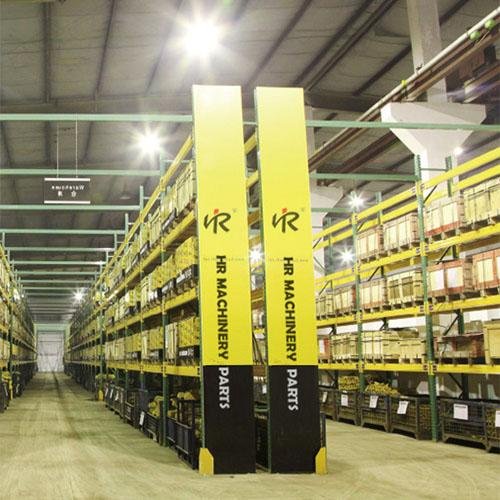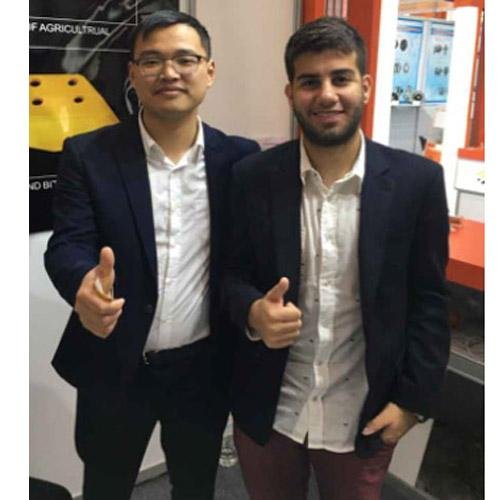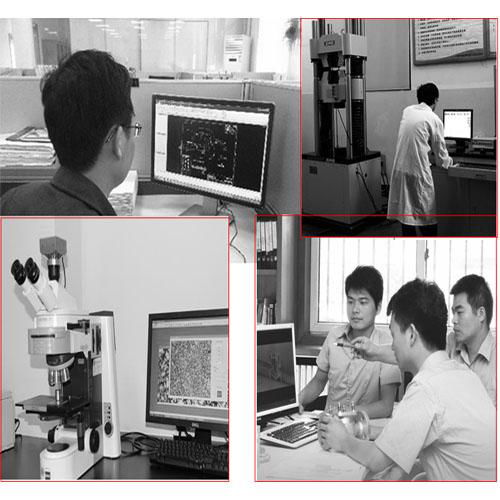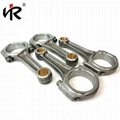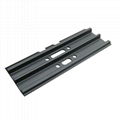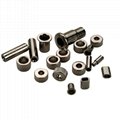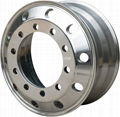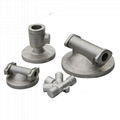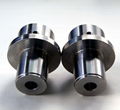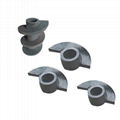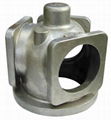| Model: | Custom-made |
|---|---|
| Brand: | HR |
| Origin: | Made In China |
| Category: | Industrial Supplies / Machinery / Cast & Forged |
| Label: | aluminum alloy , aluminum die casting , Forged aluminum |
| Price: |
US $3
/ kg
|
| Min. Order: | 1000 kg |
Product Description
|
>>Aluminum Die Casting >>Technical introduction |
|
Die-casting is similar to Permanent mold castings except that the metal is injected into the mold under high pressure of 10-210Mpa (1,450-30,500) psi . This results in a more uniform part, generally good surface finish and good dimensional accuracy, as good as 0.2 % of casting dimension. For many parts, post-machining can be totally eliminated, or very light machining may be required to bring dimensions to size. |
|
Die-casting can be done using a cold chamber or hot chamber process. |
|
|
Die casting molds (called dies in the industry) tend to be expensive as they are made from hardened steel-also the cycle time for building these tend to be long. Also the stronger and harder metals such as iron and steel cannot be die-cast |
|
Common Alloys in Die Casting |
|
|
|
|
Minimum wall thicknesses and minimum draft angles for die casting are |
|||||||||||||||
|
|||||||||||||||
|
Die-castings are typically limited from 20 kg (55 lb) max. for Magnesium, to 35 kg (77 lb) max. for Zinc. Large castings tend to have greater porosity problems, due to entrapped air, and the melt solidifying before it gets to the furthest extremities of the die-cast cavity. The porosity problem can be somewhat overcome by vacuum die casting From a design point of view, it is best to design parts with uniform wall thicknesses and cores of simple shapes. Heavy sections cause cooling problems, trapped gases causing porosity. All corners should be radiused generously to avoid stress concentration. Draft allowance should be provided to all for releasing the parts-these are typically 0.25º to 0.75º per side depending on the material. die casting, aluminum die casting |
Member Information
| Jinhua Hanrui machinery co.,ltd | |
|---|---|
| Country/Region: | Zhe Jiang - China |
| Business Nature: | Manufacturer |
| Phone: | 15105891418 |
| Contact: | Honourli (sales manager) |
| Last Online: | 10 Apr, 2018 |
Related Products of this Company
-
heat treated casting and forging parts
US $1.9
-
ductile Iron made by customer
US $1.2
-
special steel High manganese steel wear
US $1.7
-
low alloy steel parts made by casting
US $1.5
-
steel forging parts metal forgings
-
forged Alloy steel casting parts
US $1.6
-
castings and CNC machining
US $2
-
grey iron casting parts by CNC machining
US $1.4
-
silica sol investment casting parts
-
custom made parts by special casting
US $1.4

